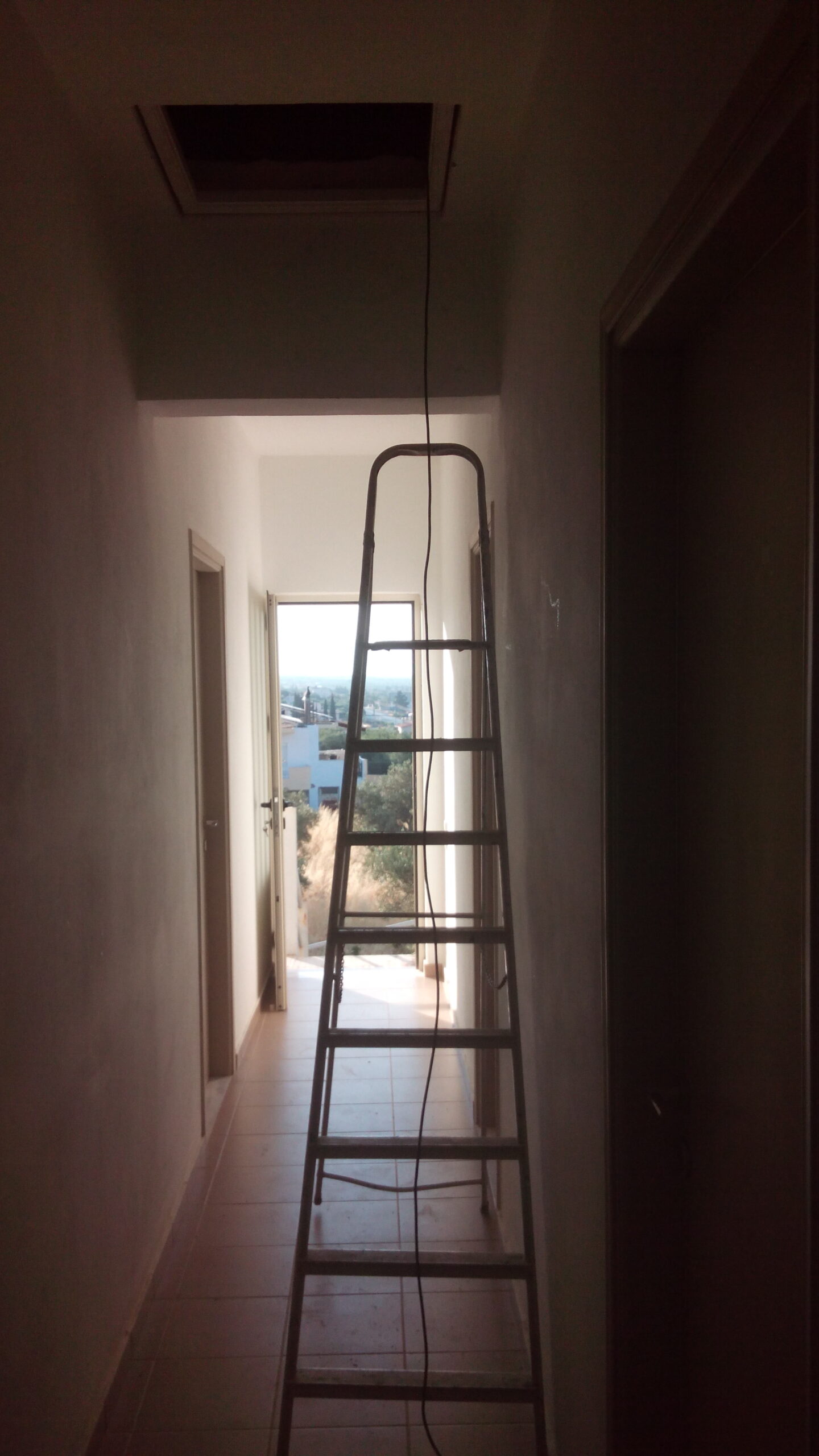Day 1 is Logistics: go back to the airport and fetch the remaining team members, obtain Internet connection, fix the ritual problems with water supply, broken light bulbs.
Actually, the water problems seem pretty serious at the moment, not because there is no water (lest our readers think the Greek crisis has already reached into the realm of basic public infrastructure and natural resources) but quite simply one of the pump engines is broken, together with several pipes. This is a “good” chance to explain a bit more about the SAIA/ΙΑΣΑ house in Agioi Deka. First of all, until 1998 or 1999 Italian archaeologists were hosted in another building, the old episkopeio in the center of the village, and at some point in a school. The former director of SAIA Antonino Di Vita made a big invesment when he decided to build an entirely new headquarter, a few hundred meters above the village, with large room for both people and … archaeological finds. The SAIA house is made of two buildings, one of which is mainly devoted to storage of finds and a conservation laboratory. The two buildings are separate, so when water supply is broken on one side, we can queue outside bathrooms on the other side. How convenient. In fact, the accomodation in Agioi Deka is incredibly good compared to most other excavations I’ve been (tents, school classrooms, you name it), but it’s disappointing to see a new building that is already rotting away due to lack of maintenance and, perhaps, a mismatch between a grandiose project and a rather clumsy execution. There are many reasons for this, among them we could certainly count the continuous cuts to the SAIA – I can’t even recall how many petitions to “save” it I signed – and the future looks rather grim from here. After all, how can Italy afford to maintain a handful of such houses around Greece, plus a big headquarter and library in Athens, at a time when new taxes pop out every other month, and old privileges for foreign archaeological schools are erased by inflexible changes in the Greek administration?
From an archaeologist’s perspective, a building that is undergoing continued repair is a double-edged sword: these activities leave traces will be barely visible even in the near future (several layers of plaster and white paint on ceilings damaged by spilling water, plastic and metal pipes of different size and age and quality, …), but are we looking at vital inhabitants who took care of their roof, or scrappy squatters who did the minimum required to avoid moving somewhere else? Are the problems in furniture and services of the house in Agioi Deka caused by the big crisis of 2033 that we all know from written sources?

Lascia un commento